14/05/22 - Scottish on the poit of view of an Amateur rider
The Six Days of Scotland, known as Scottish in the environment, has just ended, a race that Crisis does not know: 280 riders chosen after a ballot - because the requests are many more every year - who compete for 7-8 hours per day on a total of 180 sections spread over a route of more than 700 km almost entirely off-road.
Sections that are the same for everyone, characterized by gates delimited by a red and a blue flag. Always traced uphill, with very wide gates that apparently offer different routes but where in reality there is always only one assumes as the best. The one that when you are not in the first starting group (it happens once in six days in rotation) is already well visible by the traces left by the other riders and you just have to follow it.
But the 30 daily zones are not the only pitfall of this classic, the classic par excellence. The Trials of the golden years of the specialty - the nostalgic 70-80s - proposed a combination of sections and routes that slowly waned for various reasons, not least environmental opposition.
Fortunately Scotland does not suffer from restrictions in the first week of May and the famous moorland with its deep mud pits (the black waters) are an integral part of this truly unique race.
Once it was considered by the Industries an indispensable test before launching the models in production, moreover any success could have acted as a sounding board in sales. The lack of transparency of the scores with riders withour mark cards, completely at the mercy of judges who are certainly upright, led the manufacturers to desert the stage with their official riders. Riders who - today increasingly given the diversity of obstacles encountered in the world championship- have to train to run a different Trial, almost a different branch of the same sport.
On the contrary, the interest has grown out of all proportion among amateur pilots who, together with famous former pilots, compete every year for the restricted places to participate in it
.
If the contenders for victory challenge each other with zeros, many of them manage to run the whole day without penalty, looking at the ranking from below, the objectives are very different. Just finishing it within the time limit, entering and trying to cover all the sections is a very respectable goal.
What drives competitiors to fight for six days in even extreme weather conditions we wanted to ask to fifty-six-year-old Dr. Paolo Broganelli, chief of the departmental structure of dermatology at the San Lazzaro di Torino hospital, a great enthusiast and frequenter of the last 4 editions.
Paolo why the Six Days?
"I had always been attracted to this race and when I tried it for the first time six years ago, on the first day I was already out of time, then I continued because the organization allows it, but in my heart I just wanted to try again and take it to term."
But after you succeeded in finishing it the following year, you went back, why?
“It has an indescribable charm. The sections and above all the routes to fantastic places, a challenge you do with yourself, because you face stones, climb very steep streams, which are above your level and you do it for a personal goal, to always improve yourself. "
Can you score a maximum of three points in these sections?
"No it is not true. You can even clean some of them. I think this year, which was very hard, I also did 6 or 7 zeros, different 'dabs and some 'two'. Then yes, the majority three or five."
Did you find it harder than past editions?
"Yes, in addition to the weather conditions, there was the new rule of having to enter all sections, otherwise you would get 10 points instead of 5. Very right rule but when you are already exhausted at the end of the day, being able to skip some sections would have done comfortable. Then the marchalls themselves invited you to finish the section at all costs. In some cases there was no alternative."
During the route, did it happen to you in recent years to end up in the famous black water?
“In all editions - laughing - this year a couple of times, in one my chain jumped off and it wound around the sprocket. In another, the water entered my filter box. I'll tell you an anecdote. Just as I was untangling myself in the route to avoid black waters, I spotted something white. I stopped and it was the time table of Carlos Casas (a Spanish competitor over sixty years old who boasts numerous editions), I recovered it. He risked being disqualified if he hadn't returned it in the evening."
So you have to manage mechanically as well?
"Absolutely yes: it is very important if unexpected events happen to you."
In the evening, then did you arrange to fix the bike for the next day?
"When I arrived I would put the bike in the Park Ferme, because I didn't know exactly if I was running out of time or not, I postponed the ordinary maintenance to the 20 minutes you have the next morning."
What were you able to do in that time frame?
"Once I changed the chain and another the rear tire, with only oral assistance from other more experienced, because as you know only you can work on your bike."
Has the no-stop regulation been applied?
“Some of the marchalls were very severe, the slightest stop was punished, someone else allowed more. But with that type of section, voluntary stops would not have been fruitful."
Is the scoring system always the archaic one of when I made it in 2000?
"I think yes. The observer marks the rider's number and his score on a paper. Then in the evening the ranking is never ready before 11pm."
I have seen from the videos that even signaling by raising a hand the score is not part of the tradition, how do you know how much you have done?
"You have to ask the observer, Someone tells you even if you don't ask but they are few."
How is the environment with those who run with you, with the numbers close to you?
“This year I found myself strong riders, there was Dabill, Connor, it is useful to see them, also where they pass in the routes. Then I was with Ferrari (his friend nda) and we were helping each other out."
How much does the registration cost?
"You pay 600 pounds including the gasoline that the organization brings you along the way, thanks to the Scottish military."
And overall how much is spent on this adventure?
"But if one wants to rent the motorbike and then the trip and the hotel, we are around € 2000 -2500."
What would you recommend to those who want to try their hand?
“Training by doing a lot of hard motorcycle mountaineering. Arrive with at least a hundred hours behind mule tracks and difficult routes. Then a good preparation in the gym."
And from a mental point of view?
“The ideal is to go there with a friend to motivate each other in difficult times. If you are alone you must be convinced and ready to accept the unexpected matters."
Will there be a fifth edition?
“I don't know, for now I'm telling you no. It was very hard and I could even be satisfied with these 4 adventures."
photos by Eric Kitchen
---------------------------------------------------------------------------------------
la Sei Giorni vista da un pilota amatoriale
Si è appena conclusa la Sei Giorni di Scozia, detta Scottish nell'ambiente, una gara che non conosce crisi: 280 piloti scelti dopo un sorteggio - perchè le richieste sono tutti gli anni molte di più - che si sfidanoper 7-8 ore al giorno su un totale di 180 zone distribuite su un percorso di più di 700 km quasi interamente fuoristrada.
Zone uguali per tutti, caratterizzate da porte delimitate da una freccia rossa ed una blu. Sempre tracciate in salita, con porte molto larghe che offrono apparentemente diversi percorsi ma dove in realtà è sempre solo uno il migliore. Quello che quando non sei nel primo gruppo di partenza (a rotazione succede una volta nei sei giorni) è già ben evidenziato dalle tracce lasciate dagli altri piloti e non ti resta che seguirlo.
Ma le 30 zone giornaliere non sono l'unica insidia di questa classica, la classica per eccellenza. I Trial degli anni d'oro della specialità – i nostalgici 70-80 ma anche 90 – proponevano un connubio zone-trasferimento che piano piano è andato scemando per svariate ragioni, non ultimo le opposizioni ambientalistiche.
Per fortuna la Scozia nella prima settimana di maggio non soffre di restrizioni e la famosa brughiera con le profonde pozze di fango (i black water) sono parte integrante di questa gara veramente unica.
Un tempo era considerata dalle Industrie un indispensabile test prima di lanciare i modelli in produzione, inoltre un eventuale successo avrebbe potuto fungere da cassa di risonanza nelle vendite. La poca trasparenza dei punteggi con piloti senza cartellino, completamente alla mercè di giudici sicuramente integerrimi, ha poi indotto i Costruttori a disertare la tappa coi loro piloti ufficiali. Piloti che - oggi sempre di più visto la diversità di ostacoli incontrati nel mondiale – dovrebbero allenarsi per correre un Trial differente, quasi una branca diversa di uno stesso sport.
Al contrario l'interesse è cresciuto a dismisura tra i piloti amatoriali che insieme a ex pilloti di grido si contendono tutti gli anni i ristretti posti per parteciparvi.
Se i pretendenti alla vittoria si sfidano a colpi di zeri, a molti di loro riesce di girare senza penalità l'intera giornata, guardando la classifica dal basso gli obbiettivi sono molto diversi. Già finirla nel tempo limite, entrando e provando a percorrere tutte le zone è un traguardo di tutto rispetto.
Cosa spinga a combattere per sei giorni in condizioni meteo anche estreme lo abbiamo voluto chiedere al cinquantaseienne dott, Paolo Broganelli, primario responsabile di struttura dipartimentale di dermatologia presso l'ospedale San Lazzaro di Torino, grande appassionato e frequentatore delle ultime 4 edizioni.
Paolo perchè la Sei Giorni?
“Ero sempre stato attratto da questa gara e quando ho provato per la prima volta sei anni fa, già al primo giorno ero finito fuori tempo massimo, poi ho continuato perchè l'organizzazione lo permette, ma in cuor mio desideravo solo riprovarci e portarla a termine.”
Ma dopo che sei riuscito l'anno successivo, ci sei tornato, come mai?
“Ha un fascino indescrivibile. Le zone e soprattutto i trasferimenti in posti fantastici, una sfida che fai con te stesso, perchè affronti pietre, risalite di torrenti molto ripidi, che sono superiori al tuo livello e lo fai per un traguardo personale, per migliorarti sempre.”
Sono zone dove puoi fare al massimo tre punti se ti va bene?
“No, non è vero. Qualcuna la riesci a fare a meno. Penso quest'anno, che è stata durissima, di aver fatto anche 6 o 7 zeri, diversi 'uno' e qualche 'due'. Poi sì, la maggioranza tre o cinque.”
L'hai trovata più dura delle edizioni passate?
“Sì oltre alle condizioni meteo, c'è stata la nuova regola di dover entrare in tutte le zone, altrimenti prendevi 10 punti al posto di 5. Regola giustissima ma quando sei già sfinito al termine della giornata, il poter saltare qualche zona avrebbe fatto comodo. Poi i giudici stessi ti invitavano a finire a tutti i costi la zona. In alcuni casi non c'era alternativa.”
Nel trasferimento ti è capitato in questi anni di finire nei famosi black water?
“In tutte le edizioni, - ridendo - quest'anno un paio di volte, in una mi è saltata la catena e si è riavvolta intorno al pignone. In un'altra è entrata l'acqua nella cassa filtro. Ti racconto un aneddoto. Proprio mentre nel trasferimento mi districavo per evitare i buchi neri, ho scorto qualcosa di bianco. Mi sono fermato ed era la tabella del tempo di gara di Carlos Casas (un concorrente spagnolo ultra sessantenne che vanta numerose edizioni), glielo recuperata. Rischiava la squalifica non l'avesse riconsegnata alla sera.”
Quindi devi cavartela anche dal punto di vista meccanico?
“Assolutamente sì: è molto importante se ti succedono imprevisti.”
Alla sera poi provvedevi a sistemarti la moto per il giorno dopo?
“Quando arrivavo mettevo la moto al parco chiuso, perchè non sapevo esattamente se stavo avanzando del tempo oppure no, rimandavo l'ordinaria manutenzione ai 20 minuti che hai la mattina successiva.”
Cosa riuscivi a fare in quel lasso di tempo?
“Una volta ho cambiato la catena e un'altra la gomma posteriore, con l'assistenza solo orale di altri più esperti, perchè come sai solo tu puoi lavorare sulla tua moto.”
Il regolamento no-stop è stato applicato?
“Qualche giudice è stato molto severo, la minima fermata l'ha punita, qualcun altro ha concesso di più. Ma con quel tipo di zone le fermate volontarie non sarebbero state fruttuose.”
Il sistema di rilevazione del punteggio è sempre quello arcaico di quando l'ho fatta io nel 2000?
“Penso di sì. Il giudice segna su un taccuino numero del pilota e punteggio. Poi alla sera la classifica non è mai pronta prima delle 23.”
Ho visto dai video che anche segnalare alzando la mano il punteggio non fa parte della tradizione, come fai a sapere quanto hai fatto?
“Lo devi chiedere al giudice, Qualcuno te lo dice anche se non lo chiedi ma sono pochi.”
L'ambiente con quelli che corrono insieme a te, coi numeri vicino a te, com'è?
“Quest'anno mi sono trovato piloti forti, c'era Dabill, Connor, è utile vedere loro, anche dove passano nei trasferimenti. Poi io ero con Ferrari e ci davamo una mano a vicenda.”
Quanto costa l'iscrizione?
“Paghi 600 sterline comprensivo della benzina o miscela che l'organizzazione ti porta grazie ai militari scozzesi lungo il percorso.”
E complessivamente quanto si spende per questa avventura?
“Ma se uno vuole affittare la moto e poi il viaggio e l'albergo, siamo sui 2000 -2500 € .”
Cosa consiglieresti a chi si volesse cimentare?
“Allenarsi facendo tanto moto alpinismo duro. Arrivare con almeno un centinaio di ore alle spalle di mulattiere e percorsi difficili. Poi una buona preparazione in palestra.”
E dal punto di vista mentale?
“L'ideale e andarci con un amico per motivarsi a vicenda nei momenti difficili. Se si è soli si deve essere convinti e pronti ad accettare gli imprevisti.”
Ci sarà una quinta edizione?
“Non saprei, per ora ti dico di no. E' stata molto dura e potrei anche accontentarmi di queste 4 avventure.”
------------------------------------------------------------------------------------------
---> results Day 1
---> results Day 2
---> results Day 3
---> results Day 4
---> results Day 5
---> results Day 6
---> Final Results
---> Awards
------------------------------------------------------------------------------------------

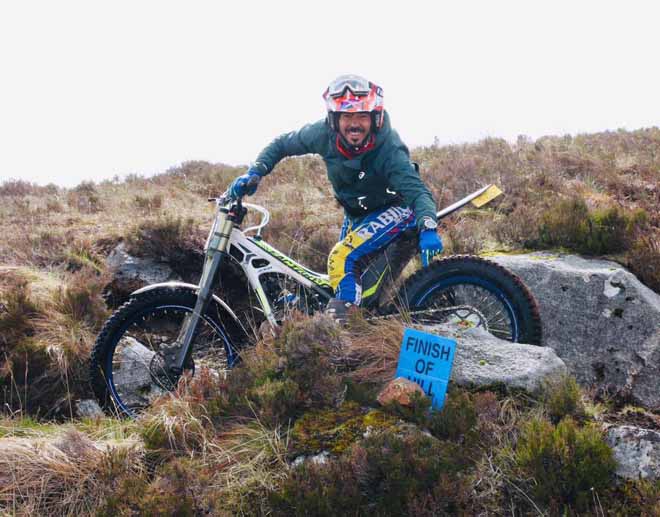
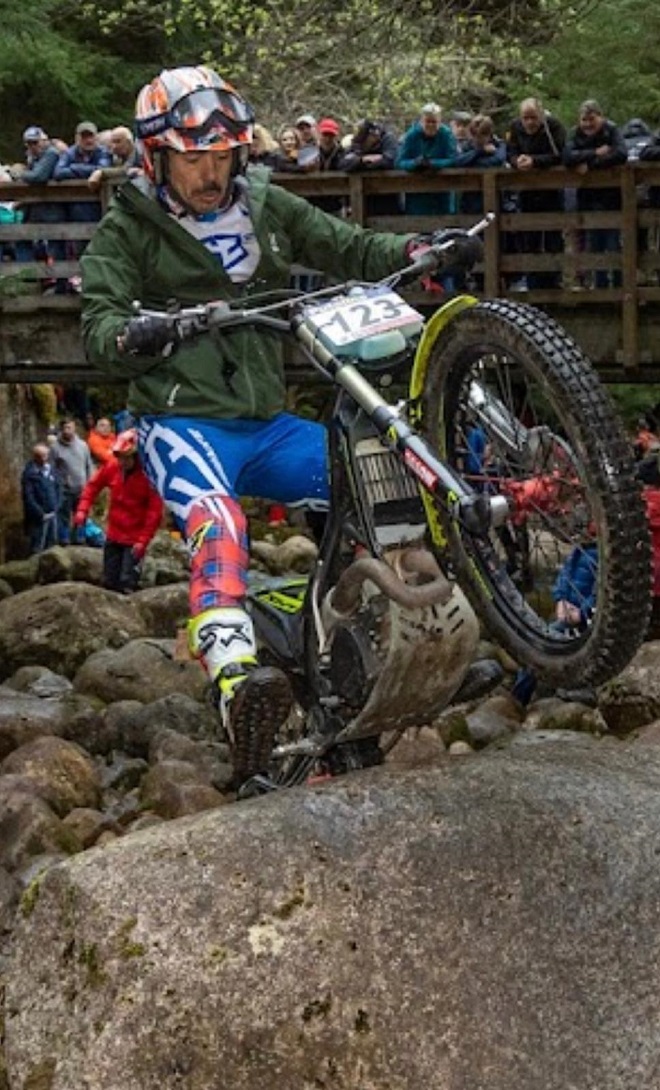
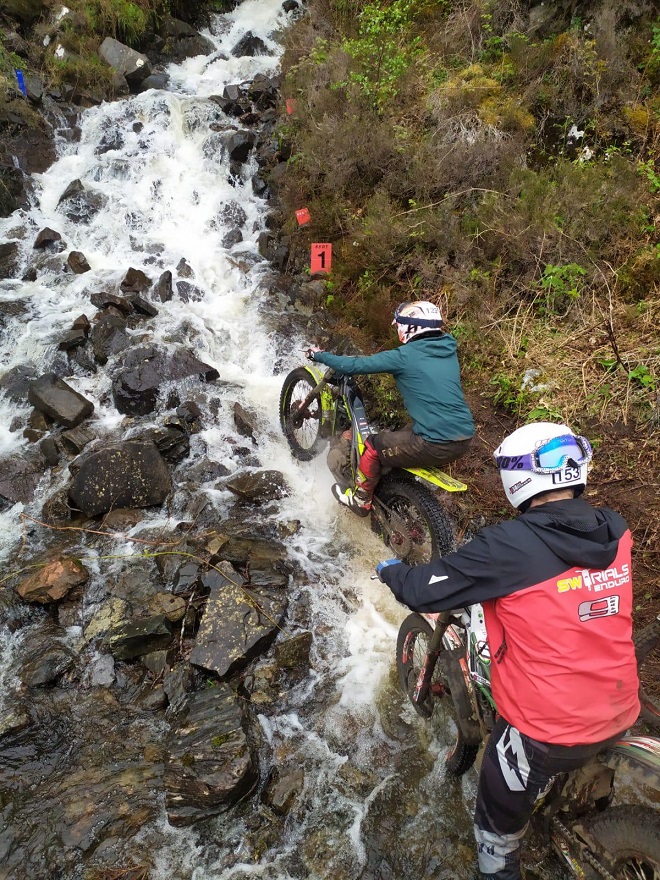
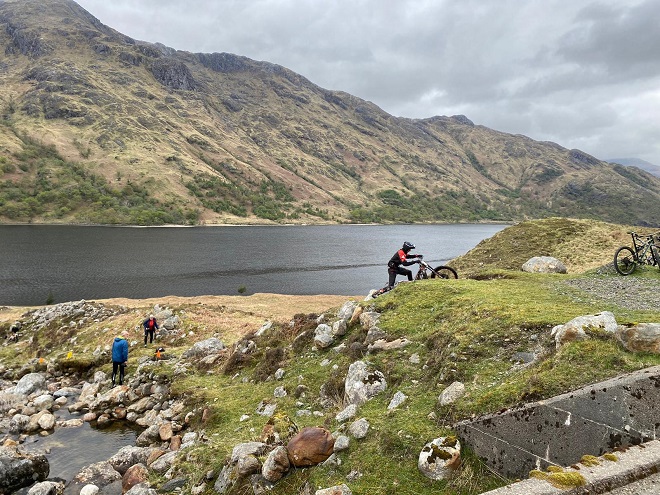
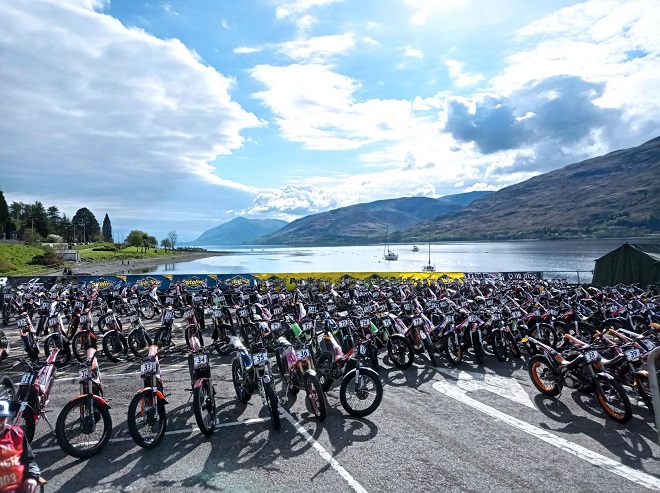

---------------------------------------------------------------------------------------


